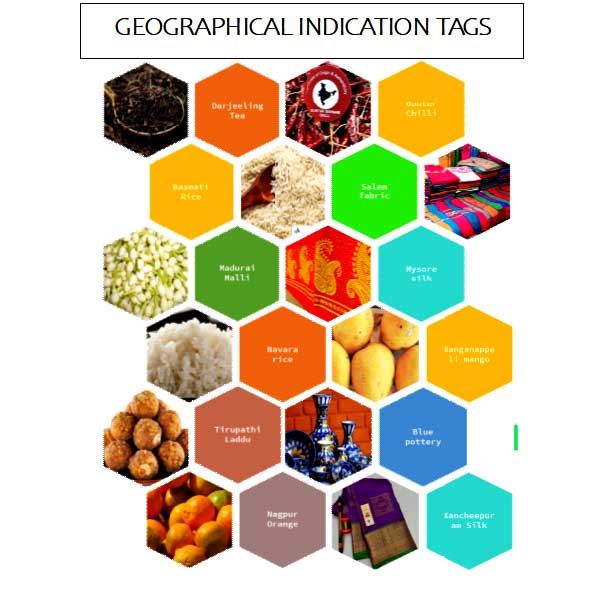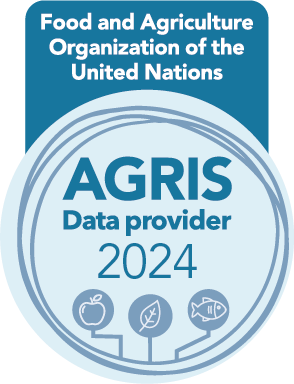Geographical indications: Global trends and Indias' progress in agricultural and handicraft products
DOI:
https://doi.org/10.14719/pst.7178Keywords:
compound growth, geographical indications, global, IndiaAbstract
Geographical Indications (GIs) provide legal protection to products tied to specific regions, highlighting their unique qualities and heritage. The significance of GIs has grown globally, as they serve as tools to protect traditional products, promote regional economic development and ensure product quality in the market. This paper examines the role of GIs globally and in India, emphasizing their importance in promoting sustainable production practices and protecting intellectual property rights. The study utilizes secondary data from the World Intellectual Property Organization (WIPO) and the Intellectual Property India database, examining trends in GI registration across various product categories and states. China ranks first in the total GI share with 9785 GIs and India ranks 52nd with 530 GIs Globally in 2023. In India, Uttar Pradesh ranks first with 74 GIs and Tamil Nadu Ranks second with 59 GIs in 2024. The findings revealed that agricultural commodities and handicrafts products dominate the GI landscape in India, while globally, wines and spirits form the largest share of GIs. Compound Annual Growth Rate (CAGR) for Global (8.17 %) and Indian GIs (5.76 %) showed a positive growth rate for the period under study. CAGR analysis indicated the highest growth in the registration of GIs under agricultural commodities in India (10.63 %) and globally (12.14 %). The paper concludes that while India has made significant progress, further research and policy frameworks are needed to address challenges in promoting GIs and the support needed post-GI registration. Globally, GIs offer potential for economic growth, cultural preservation and sustainability.
Downloads
References
Barbosa DB. Intellectual property in Brazil: A brief synopsis [internet]. Rio de Janeiro, Brazil: Federal University of Rio de Janeiro; 2012 [cited 2024 Sep 20]. Available from: https://www.daniel-ip.com/
Shaver L. Access to knowledge in Brazil: new research on intellectual property, innovation and development. London: Bloomsbury Academic; 2010. https://doi.org/10.5040/9781849665568.ch-001
IPindia. GI Registry, India. List of registered geographical indications in India [internet]. 2024 [cited 2024Sep 20]. Available from: https://ipindia.gov.in/registered-gls.html
Dias C, Mendes L. Protected designation of origin (PDO), protected geographical indication (PGI) and traditional speciality guaranteed (TSG): A bibiliometric analysis. Food Res Int. 2018;103:492–508. https://doi.org/10.1016/j.foodres.2017.09.059
Osei C. Nation branding for FDI attraction: The case of Ghana. London: Routledge; 2016.
Rupprecht T. Global varieties of neoliberalism: Ideas on free markets and strong states in late twentieth-century Chile and Russia. Global Persp. 2020;1(1):13278. https://doi.org/10.1525/gp.2020.13278
Rangnekar D. The socio-economics of geographical indications. UNCTAD-ICTSD Project on IPRs and Sustainable Development, Issue Paper. 2004;8:13–15. https://doi.org/10.7215/IP_IP_20040501B
World Intellectual Property Indicators, World Intellectual Property Organisation (WIPO) [internet].Geneva, Switzerland WIPO; 2023. [cited 2024 Sep 20]. Available from: https://www.wipo.int/publications/en/details.jsp?id=4678&plang=EN ;
Beresford, A. The role of geographical indications in international trade. J World Trade. 2017;51(4):497–518.
Török Á, Jantyik L, Maró ZM, Moir HV. Understanding the real-world impact of geographical indications: A critical review of the empirical economic literature. Sustainability. 2020;12(22):9434. https://doi.org/10.3390/su12229434
De Filippis F, Giua M, Salvatici L, Vaquero-Piñeiro C. The international trade impacts of geographical indications: Hype or hope?. Food Pol. 2022;112:102371. https://doi.org/10.1016/j.foodpol.2022.102371
Bournival M. Geographical Indications: Legal framework and economic implications. J Intl Trade Eco Dev. 2020;29(4):413–31.
Hoang G, Le HT, Nguyen AH, Dao QM. The impact of geographical indications on sustainable rural development: A case study of the Vietnamese Cao Phong orange. Sustainability. 2020;12(11):4711. https://doi.org/10.3390/su12114711
Ihsaniyati H, Setyowati N. Factors motivating the adoption of geographical indication-based quality standards among robusta coffee farmers in Indonesia. Intl J Bus Soc. 2022;23(1):207–25. https://doi.org/10.33736/ijbs.4609.2022
Laksono P, Mulyo JH, Suryantini A. Farmers' willingness to adopt geographical indication practice in Indonesia: A psycho behavioral analysis. Heliyon. 2022;8(8):e10178. https://doi.org/10.1016/j.heliyon.2022.e10178
López?Bayón S, Fernández?Barcala M, González?Díaz M. In search of agri?food quality for wine: Is it enough to join a geographical indication?. Agribusiness. 2020;36(4):568–90. https://doi.org/10.1002/agr.21665
Bhat R. Geographical indications in Asia: trends and challenges. As Eco PolRev. 2010;15(2):213–26.
Ashwathi TM. Geographical indications in India: major issues and challenges. LLM [dissertation]. Kochi: National University of Advanced Legal studies; 2020. Available from: https://14.139.185.167:8080/jspui/bitstream/123456789/65/1/LM0219008 %20ITL %20.pdf
Rai A. Economic impact of geographical indications on rural economy. I JAgri Sci. 2017;87(2):156–64.
Pasumarthy R. An analysis of intellectual property rights in India. Intl J Intell Prop Law. 2020;11(2):1–4.
Cardoso VA, Lourenzani AE, Caldas MM, Bernardo CH, Bernardo R. The benefits and barriers of geographical indications to producers: A review. Renewable Agri Food Sys. 2022;37(6):707–19. https://doi.org/10.1017/S174217052200031X
Robinson L. Digital traceability for geographical indications: The future of sustainable trade. World Tr Rev. 2020;25(1):115–32.
Cassago AL, Artêncio MM, de Moura Engracia Giraldi J, Da Costa FB. Metabolomics as a marketing tool for geographical indication products: a literature review. Euro Food Res Technol. 2021;247(9):2143?59. https://doi.org/10.1007/s00217-021-03782-2
Fanning E, Eyres G, Frew R, Kebede B. Linking cocoa quality attributes to its origin using geographical indications. Food Control. 2023;151:109825. https://doi.org/10.1016/j.foodcont.2023.109825
Das A, Mishra RR. Compound annual growth (CAGR) rate of fresh tea leaf (Camellia sinensis) production in Assam: a statistical approach. Available at SSRN 3728002. 2020. https://doi.org/10.2139/ssrn.3728002.
Poetschki K, Peerlings J, Dries L. The impact of geographical indications on farm incomes in the EU olives and wine sector. Bri Food J. 2021 ;123(13):579–98. https://doi.org/10.1108/BFJ-12-2020-1119
Ngokkuen C, Grote U. Impact of geographical indication adoption on household welfare and poverty reduction. Intl J Arts Sci. 2012;5(6):277.
Jena PR, Grote U. Impact evaluation of traditional Basmati rice cultivation in Uttarakhand state of northern India: what implications does it hold for Geographical Indications?. World Development. 2012;40(9):1895–907. https://doi.org/10.1016/j.worlddev.2012.04.004
Radhika AM, Thomas KJ, Kuruvila A, Raju RK. Assessing the impact of geographical indications on well-being of rice farmers in Kerala. Intl J Intell Prop Rights. 2018;9(2):1–11.

Downloads
Published
Versions
- 01-04-2025 (2)
- 18-03-2025 (1)
How to Cite
Issue
Section
License
Copyright (c) 2025 L T Thirumarudhan, Anjugam M, Suresh Kumar D, Indu Rani C, Nirmala Devi M, Vasanthi R

This work is licensed under a Creative Commons Attribution 4.0 International License.
Copyright and Licence details of published articles
Authors who publish with this journal agree to the following terms:
- Authors retain copyright and grant the journal right of first publication with the work simultaneously licensed under a Creative Commons Attribution License that allows others to share the work with an acknowledgement of the work's authorship and initial publication in this journal.
- Authors are able to enter into separate, additional contractual arrangements for the non-exclusive distribution of the journal's published version of the work (e.g., post it to an institutional repository or publish it in a book), with an acknowledgement of its initial publication in this journal.
Open Access Policy
Plant Science Today is an open access journal. There is no registration required to read any article. All published articles are distributed under the terms of the Creative Commons Attribution License (CC Attribution 4.0), which permits unrestricted use, distribution, and reproduction in any medium, provided the original author and source are credited (https://creativecommons.org/licenses/by/4.0/). Authors are permitted and encouraged to post their work online (e.g., in institutional repositories or on their website) prior to and during the submission process, as it can lead to productive exchanges, as well as earlier and greater citation of published work (See The Effect of Open Access).









